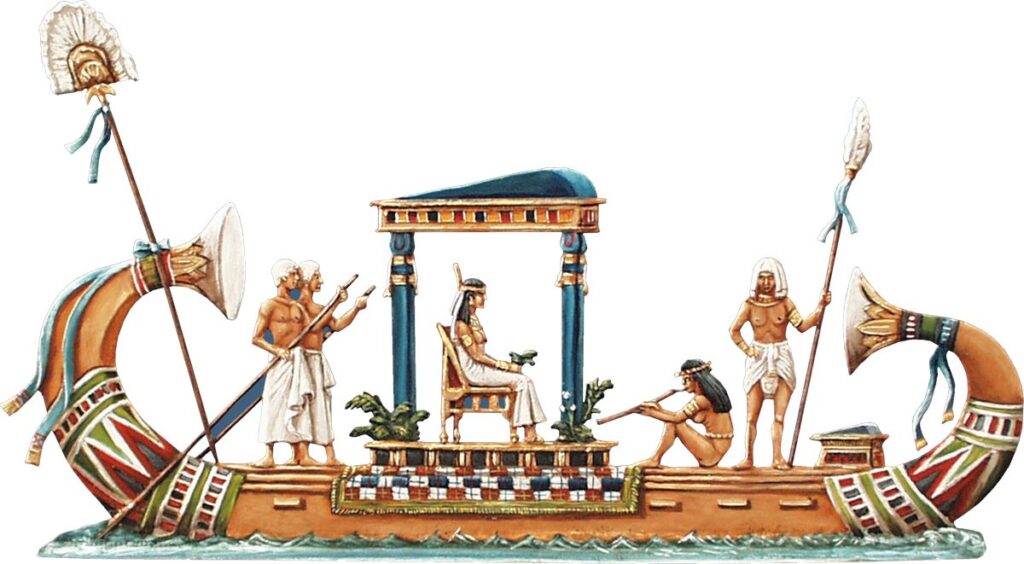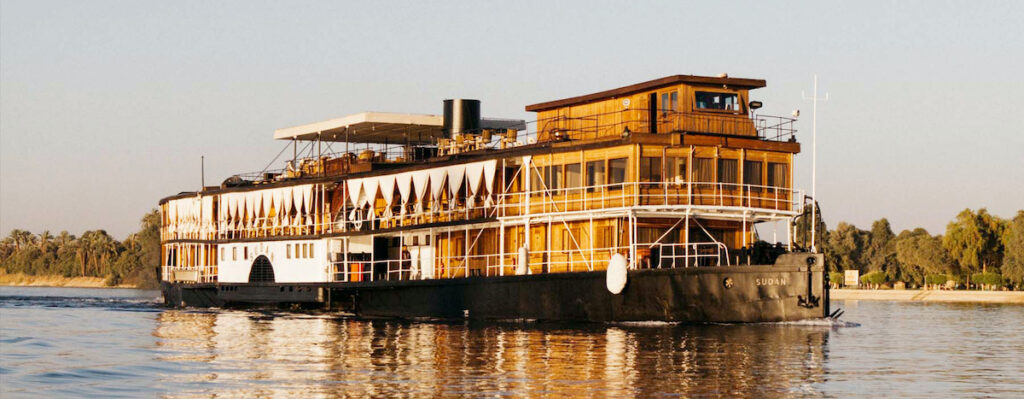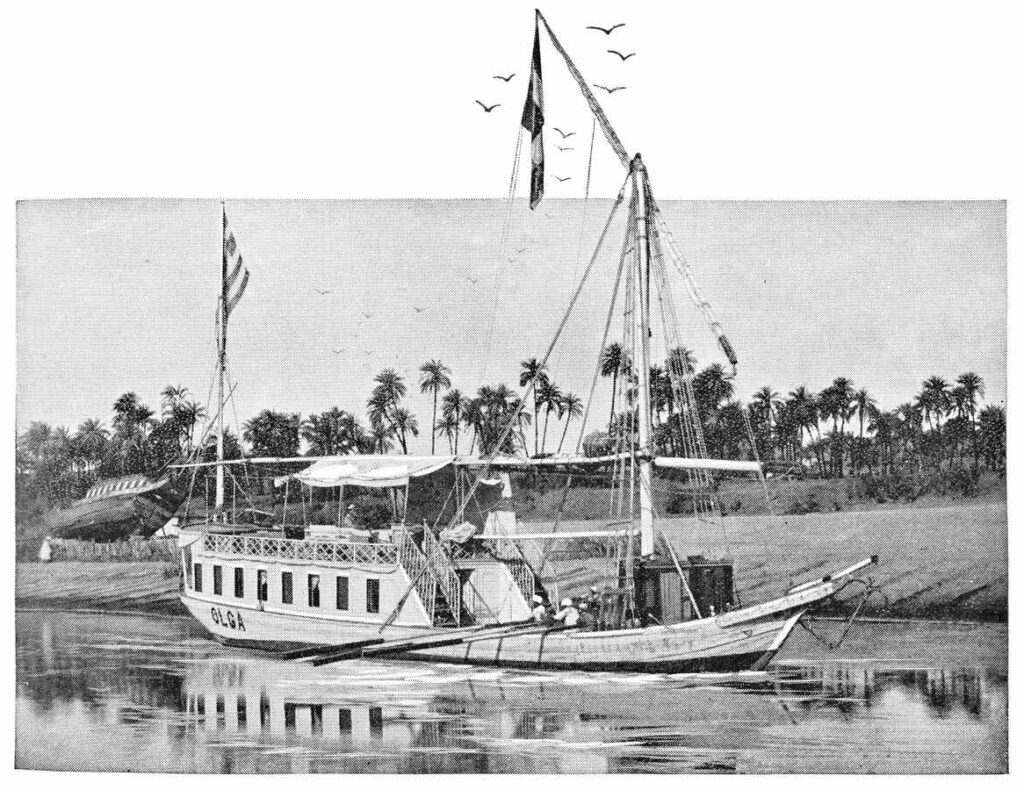
Nile Cruising History
The story of leisure sailing on Egypt’s great Nile River
While tourists’ knowledge of traditional dahabiya sailing boats as a much more pleasant, flexible, and upscale alternative to large cruise ships for peacefully cruising Egypt’s great Nile River may be a relatively recent trend, the draw of leisurely sailing the Nile is by no means new.
To understand the appeal of sailing the Nile aboard a more traditional and authentic cruising vessel, let’s first look back at the vital role that the Nile River has played in the history of not only Egypt and the ancient and medieval kingdoms of northwestern Africa and the Middle East, but also in the fate of the empires and histories of Europe as well.
A “Giver of Life” and Mobility in Ancient Egypt
The inhabitants of northeast Africa’s fertile Nile Valley have used the waters of the world’s longest river for the transport of people and goods for tens of thousands of years. In ancient Egyptian literature, poetry, and official historical accounts, the Nile plays a very critical and central role in both commerce and in life itself, and to this day it remains the central artery of civilization in Egypt.
The waters of the Nile River originate in the mountain springs of Ethiopia, Rwanda, Burundi, and the Democratic Republic of Congo, pooling in Lake Tana in the Ethopian highlands and in Lake Victoria in central Africa before continuing on their 4,100-mile journey to the Egypt’s Nile Delta region and finally spilling out into the Mediterannean Sea. This vast watery superhighway is the very reason that monuments like the Pyramids of Giza and the great temples of Luxor, Aswan, and everywhere in between exist. Without the Nile as a mode of transport, the ancient Egyptians would likely never have been able to transport the immense stones used to build these structures across hundreds of miles to where they were needed.
But the Nile River wasn’t just utilized for monument- and empire-building. It was also vitally important for commerce, sustinence, and leisure. Boats that traversed the Nile’s waters for millenia have carried traders, fishermen, pharaohs, and ordinary people alike in pursuit of a vast array of aims.

The Dawn of Luxury Nile Cruising for Tourists
Just as they did thousands of years ago, luxurious boats have carried pharaohs, kings, queens, conquerers, and leisure travelers alike up and down the Nile in comfort and style. The designs of Nile cruising boats have ranged from huge canoe-shaped floating villas powered by dozens if not hundreds of oarsmen to wind-powered sailboats to steam-driven paddle boats to modern gas-powered ships.
We know from ancient papyri and hieroglyphic texts that ancient Egypt’s rulers traipsed up and down the Nile as they embarked on expeditions and military campaigns, as well as to simply govern and traverse their vast empire. Alexander the Great sailed nearly the entire length of Egypt along the Nile as he explored the monuments of a land with which he quickly became enamored. And Cleopatra famously took Ceasar on a pleasure cruise up the Nile shortly before their fateful suicides and the fall of Ptolemaic Egypt to the Roman Empire.
After mass international tourism to Egypt began to bloom in the 19th century, spurred by the interest generated from events such as the publication in Europe of Description de l’Égypte in 1809 following Napoleon’s invasion and surveying of the country and the international publicity surrounding the opening of the Suez Canal in 1869, tourism companies began to pop up offering cruises on the Nile both as a form of practical transport to the far southern reaches of Egypt where the grandest temples were located and as a pleasure ride to be enjoyed on its own merits.
The discovery and international spectacle around the discovery of King Tut’s undisturbed, treasure-laden tomb in 1922 and the publication of Agatha Christie’s Death on the Nile in 1937, which specifically featured and glamorized Nile cruising, further fueled an uptick in touristic interest in visiting Egypt’s grand monuments and sailing its famous Nile River.

Why the Sailboat Reigned (and Reigns) Supreme
Among all of the Nile’s modes of transport, sailboats stand out as the most traditional and widely used type of vessel throughout Egyptian history. Not only were they the only practical method of transport over long distances for those not in possession of 100 captured Hittites to row for you, but the quietness, simplicity, speed, and cost-effectiveness of wind power have always made sail-and-masted vessels the option of choice throughout history.
While the felucca remains the most common and practical – although also the smallest – form of sailboat used on the Nile, its larger and more luxurious cousin, the dahabiya, reigns supreme as the choice of luxury leisure travelers to Egypt for cruising the Nile in style while staying true to Egypt’s local sailing culture and traditions.

The “New” Trend in Modern Nile Cruising
Today’s dahabiyas are thoroughly modern sailing vessels built in the traditional local style. The best among them maintain an old-world ambiance while offering all modern conveniences and luxuries that 21st-century travelers expect. These include spacious cabins, plush bedding, huge buffet spreads for every meal, 24-hour electricity, modern bathrooms with fully-enclosed showers, indoor and outdoor dining areas, and even wi-fi connectivity.
